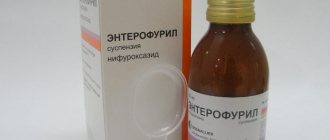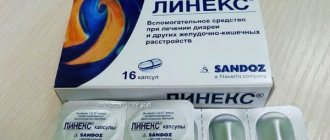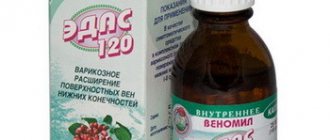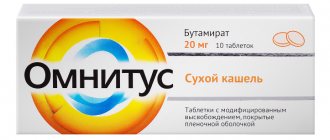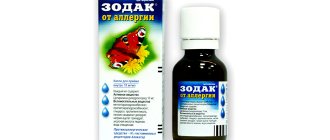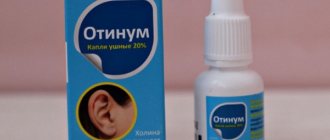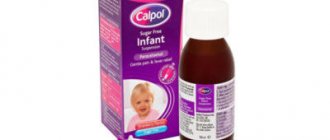Release form
Interferon is produced by several companies in the following release forms:
- solution for instillation or spraying into the nose and inhalation;
- lyophilisate for preparing a solution, which is also used for nasal instillation and inhalation.
The drug can be produced in glass ampoules or vials. It also comes in a dropper bottle made of polymer materials.
Human leukocyte interferon is not available in eye drops, tablets, ointments and gels.
Human leukocyte interferon
Human leukocyte interferon (hereinafter referred to as Interferon) is an immunomodulatory agent. The last two decades have been marked by the rapid development of clinical immunology and, in particular, such a direction as immunocorrection. The immune system in the human body performs the most important function of maintaining homeostasis. This has acquired particular importance in recent years, marked by a progressive deterioration of the environmental situation, an increase in the incidence of AIDS, and the consequences of the Chernobyl accident and other man-made disasters. In this regard, the human immune system is under constant extreme stress and needs external support. Moreover, the fast pace of life in modern megacities has increased the influence of another negative factor - chronic stress, the impact of which on the immune system is no less destructive than ionizing radiation and viral infections. One way to strengthen the immune status is to take immunomodulatory drugs. Representatives of this pharmacological group are able to influence immune cells, thereby changing the nature, severity and direction of immune system reactions. The most well-known group of drugs in the class of immunomodulators are interferons. Interferons are protective proteins produced by cells as a response to the invasion of viruses and the aggressive effects of other compounds of synthetic or natural nature. Interferons are a tool for nonspecific (non-selective, acting on any foreign agents) defense of the body, which can also control the interaction between cells of the immune system, which allows these compounds to be called immunomodulators. Interferons carry out their action by binding to a specific cell receptor, as a result of which about thirty proteins are synthesized that provide the immunomodulatory effects of interferon. Among them are regulatory peptides that prevent the virus from passing through the cell membrane, preventing the synthesis of new viral cells that activate T-lymphocytes and phagocytes.
Human leukocyte interferon was created in the USSR in 1967 and immediately began to be actively used in the treatment and prevention of influenza and ARVI. The drug has immunomodulatory, antiviral, antiproliferative effects. Interferon fights viruses, increasing the resistance of healthy cells to possible virus penetration. By interacting with specific receptors on the cell membrane, interferon changes the properties of the latter, acts as a trigger that activates specific enzymes, and affects viral RNA, preventing the virus from reproducing. Stimulating the activity of phagocytes and NK (so-called natural killer cells from the English Natural killer), i.e. cells directly involved in the immune response determines the immunomodulatory activity of the drug. Interferon is available in parenteral (ampoules), rectal (suppositories) and intranasal (spray) forms. The parenteral form is intended for the treatment of hepatitis types B and C, anogenital warts, multiple myeloma, cancer of the lymphatic system (non-Hodgkin's lymphoma), granuloma fungoides, kidney cancer, malignant melanoma. Rectal form - for the treatment of hepatitis of all types. Intranasal - treatment and prevention of acute respiratory viral infections, incl. flu The specific dose of the drug and the duration of the medication course are determined by the doctor, guided by the indications, the severity of the clinical picture, medical history, and the degree of the patient’s response to the pharmacotherapy. Side effects of interferon are characteristic, first of all, of its parenteral form. These are signs of fever, dyspeptic disorders, decreased blood pressure, heart rhythm disturbances, drowsiness, and rarely - dermatological reactions. The drug should be used with extreme caution by persons who have recently had a myocardial infarction. At the initial stage of treatment, hydration therapy is recommended.
pharmachologic effect
According to the manufacturer Interferon:
- has an antiviral effect against influenza viruses, herpes viruses, adenoviruses;
- stops the growth and reproduction of bacteria and chlamydia, although it is not an antibiotic;
- increases the body's resistance to infectious diseases;
- stops the inflammatory process.
In experiments, it was found that when used in combination with methyluracil or lysozyme, a synergistic effect is observed, that is, the total effect of both medications is greater than that of each individually.
But despite this, Interferon is a medicine with unproven effectiveness.
Molecular structure of interferon - picture from Wikipedia
Instructions for use
If the drug is produced in the form of a lyophilisate, then to prepare the solution you need to add sterile distilled or simply boiled water to the mark indicated on the ampoule, which must be cooled to room temperature.
The medicine must be instilled into the nose using a pipette. If it is not there, then you can use a syringe without a needle. You can spray the medicine using the spray nozzle that comes with the kit.
The treatment regimen does not depend on the age of the child. The medicine should be instilled or sprayed as follows:
| Target | Instructions |
| Prescribing medication for the purpose of prevention | You need to instill the medicine 5 drops twice a day. The time interval between the next dose should be at least 6 hours. If a spray nozzle is used to administer the medication, then the single dosage is 0.25 ml. |
| Use of medication for therapeutic purposes | The drug should be started instilled or sprayed at the first symptoms of the disease, 5 drops or 0.25 ml every 1-2 hours at least 5 times a day. |
When using a removable spray nozzle, do the following:
- Using a syringe with a needle, draw up 0.25 ml of solution.
- Remove the needle and install the spray nozzle in its place.
- Insert the spray nozzle into the previously cleaned nostril to a depth of 0.5 cm and press the syringe plunger.
- After this, remove the nozzle, install the needle again, draw up the drug and insert it into the second nostril as described in point 3.
During the procedure, the child should sit with his head slightly thrown back; he should remain in this position for a minute after the medication is administered. It is impossible for several people to use one spray nozzle.
The drug can also be used for inhalation, which requires a heated inhaler. For one procedure you need 3 ampoules, which must be dissolved with water. The volume of liquid that needs to be added to Interferon must be specified in the annotation, since depending on the manufacturer it can vary from 4 to 10 ml. The inhalation solution must be heated to 37 degrees and inhaled through the mouth or nose twice a day with an interval of at least 6 hours for 2-3 days.
During therapy, you need to remember the following:
- The medicine cannot be used for injections.
- The temperature regime for storing the medicine must be clarified in the official instructions, since it may differ depending on the manufacturer, for example, the medicine of JSC Biomed im. I.I. Mechnikov" does not lose its therapeutic effect if you keep it at a temperature of 2 to 10 degrees, while medicines from other companies must be stored at a temperature of up to 8 degrees. The shelf life of unopened vials and ampoules is 24 months. After opening the ampoule, it can be stored at a temperature of 2 to 8 degrees for no more than 24 hours. An opened polymer bottle, which is closed with a cap, can be stored at the same temperature, but for 72 hours.
- For the purpose of prevention, the drug should be used when the risk of infection appears and continue until the threat of infection has passed.
INTERFERON (lyophilisate)
I respect him, but he periodically disappears), Genferon, gripferon.
There are other drugs, but these are the most famous. This time my son fell ill (laryngopharyngitis), I took him chlorophyllipt in tablets for treatment, I already wrote a review of interferon in ampoules, since my favorite Viferon gel was not available. Ampoule interferon can be compared with influenza drops, since the method of application and dosage are approximately the same. Honestly, I will never overpay for influenza feron when the same ampoule interferon costs several times less.
Interferon in ampoules at the peak of the incidence is also not so freely available; it, like Viferon gel, also disappears from suppliers. And then, as soon as it appeared, I ordered it and almost immediately had to buy it. The drug has a good shelf life.
Inside the package there are two ml ampoules, they are easy to open, since they are already notched, there is no need to saw them. One ampoule dissolves in 2 ml of distilled water. For one instillation you need 5 drops per nostril (0.25 ml). That is, if you are sick, you need to repeat the procedure 5 times per day, 2 ml is enough for 4 applications. That's why I dilute a couple of ampoules at a time.
Pour into a regular bottle with a pipette (leftover from hyaluronic acid, for example)
By the way, I haven’t found out how long the diluted solution can be stored. But absolutely, interferon itself and its solution must be stored in the refrigerator. By default, as we were once taught, I will prescribe a shelf life of 10 days for the finished solution. And it is better to start treatment from the first symptoms. This time we were late, but my son still recovered surprisingly quickly. I think both Chlorophyllipt and interferon helped in combination. Interferon not only has antiviral activity, but also increases immunity, the body begins to better resist infections.
The best way is still to do inhalations with interferon, the instructions describe how, but I don’t have an inhaler yet. If we continue to get sick so often, I will still buy it and switch to the inhalation method of taking medications, including interferon.
In terms of morbidity, this year has been very difficult for me and my son, so we have to rediscover both new and old inexpensive drugs, even such as classic interferon. It also comes in the form of nasal drops. But this time I only used 4 ampoules, the rest will still be useful for the course of treatment. Inexpensive and effective. It is more profitable to take ampoules.
Reviews
Parents' opinion
Moms and dads like that the drug is inexpensive and in liquid form it is immediately ready for use. Its advantages also include a small number of contraindications and adverse reactions. Most of these reviews look bought.
Parents leave negative reviews saying that the medication did not help.
Opinion Komarovsky
Evgeniy Olegovich believes that Interferon is a medicine with unproven effectiveness.
The drug is available by prescription, so self-medication is prohibited. Only a doctor should decide how to administer Interferon to a child.
By


